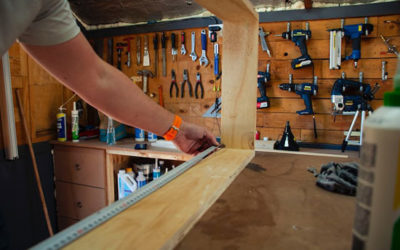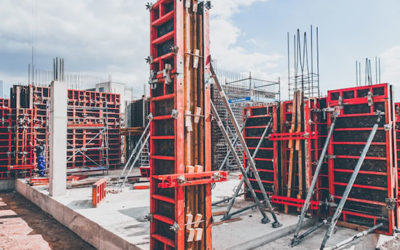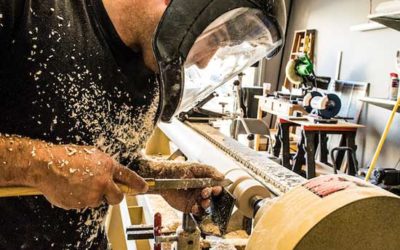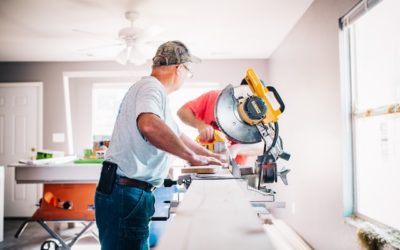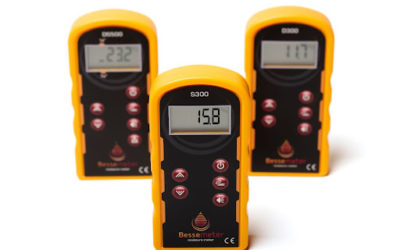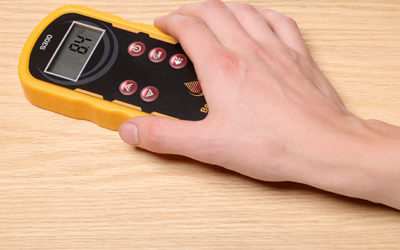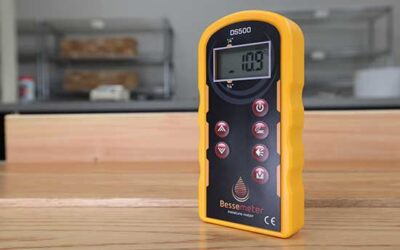Bessemeter Blog
Blog
Tips and Tricks For Woodworking Beginners
There’s a lot to learn when it comes to woodworking. If you’re relatively new to the skill, you probably still have a lot of questions about it.
Beginner’s Guide to Start Woodworking
Are you interested in starting a hobby in woodworking but don’t know where to begin?
We’ve got you covered! This comprehensive guide will teach you what you need to know to start your projects on the right foot.
The Tool Every Home Inspector Needs
What does it take to have a happy customer? How about a quality moisture meter? Could a moisture meter make the difference between being an average home inspector and a thorough one? Let’s find out as we cover.
Why Moisture Testing Matters in Wood Construction
What if there were a crucial aspect of construction that you, as a general contractor or builder, were neglecting? Some crucial measures can prevent these issues. We’ll walk through them in the context of the construction industry.
Floating Floor Woes and What to Do About Them
Are you a homeowner trying to decide on new flooring in your kitchen or another part of your home? Or are you a flooring installer wanting to keep up with trends? Jump to the section with the information you’re looking for.
Why Kiln-Dried Wood Is Better Than Air-Dried Wood
Trying to decide whether to use kiln-dried wood? It might feel like a tough call. Those are just a few benefits.
Plan Your Woodworking Project 101
Having a plan is a big part of a successful project. In fact, without a plan, you can count on running into issues that either greatly hinder or completely stop your project. What’s more, without a plan, you risk disappointing your clients and, in turn, harming your reputation.
Everything You Need to Know about Pin Moisture Meters
If you’ve browsed through the Bessemeter website, you may have noticed that we talked about different types of meters. On this page, specifically, you’re going to learn all you need to know about pin meters.
What Builders Should Know About Moisture in Wood Framing
Whether warped door openings, loose joints and fastenings, or mold, the construction business is often liable—unfortunately.
Hardwood Vs. Softwood—Which Should I Use?
Both hardwood and softwood work for many types of projects, from furniture to musical instruments to cabinetry.
Air Drying and Kiln Drying—How Long Do They Take?
The process of drying wood can take anywhere from a few weeks to a couple of years. Talk about a wide range of time!
What Every Woodworker Should Know About Kiln Drying Wood
Air drying or kiln drying—which one? Perhaps you have some beautiful walnut wood you’d like to have dried for your next woodworking project. But the question is, How should you dry it?
A Beginner’s Guide to Fixing and Preventing Water Intrusion
While serious water intrusion is something we hope you never encounter, it’s likely that, sooner or later, you’ll experience it in some way.
What Every Woodworker Should Know About Air Drying Wood
New to woodworking? Or maybe you’re an expert in the field who has decided to start drying your own lumber.
Wood Drying Process Essentials for Woodworking Projects
Did you know that most of the wood that you’re buying, whether from a lumber yard or home improvement store, has probably been through some kind of drying process?
How to Measure Moisture in Wood Without a Moisture Meter
One of the most accurate ways to get the moisture readings of wood is to use a wood moisture meter.
But if you don’t have one for some reason or another, we’ll look at some alternatives.
7 Warning Signs of a Home Moisture Problem [+ Causes]
Worried that your home or a potential rental might have a moisture problem?
Knowing how to identify a moisture problem can go a long way to ease your concerns and help you feel informed as a homeowner or rental manager. You’ll be able to catch the problems before they swell into catastrophes.
How to Troubleshoot Wood Moisture Meter Issues
On this page, you’ll learn the essential troubleshooting methods that you need to know when faced with moisture meter issues.
And after covering methods of troubleshooting, we’ll even discover how to avoid damage to your wood moisture meter altogether.
Is My Moisture Meter Just for Wood?
If it was made for use with wood materials, then the short answer is yes. Wood moisture meters are designed and calibrated to indicate the moisture content of all types and species of wood and won’t work in the same way with other materials.
But there’s a caveat to that answer.
How to Choose the Right Type of Wood for a DIY Project
You’re new to DIY woodworking but eager to get started. You’ve sourced all the needed tools and can’t wait to put them to use. All that’s left to do is get some wood for your project!
But when you arrive at your local hardware store or lumberyard, there are so many options! Which one should you choose?
How to Care for Your Wood Moisture Meter
Caring for your moisture meter is essential to protecting the investment you made and making sure it gives you moisture measurements when you most need them.
After all, your moisture meter will give you the most accurate readings when it isn’t dirty, damaged, or wet.
Common Moisture Meter Errors and Solutions
You might suspect that your moisture meter is giving incorrect readings, but how do you actually know?
Well, there are a few methods that you can use to determine if your moisture meter is providing incorrect readings.
Wood Subfloor Moisture Issues: How to Fix and Prevent Them
When you look at a beautiful floor, you might not realize that in order for that floor to be installed, several layers need to come before it, including the subfloor.
That’s why this page is all about subfloor issues, and specifically, we’ll be talking about wood subfloor material rather than concrete subfloors.
Cheap Moisture Meters Vs. High-Quality Moisture Meters
Moisture meters come in a variety of prices and levels of quality. Is there that big of a difference between cheap ones and high-quality ones?
Don’t Let Moisture Sabotage Your Concrete Subfloor
You notice boards in your hardwood have begun twisting upward and cupping. What happened?
Perhaps your wood floor is installed over concrete. Moisture in concrete subfloors poses a major issue for the wood flooring above it. This is why we want to equip you with the knowledge to address the issue and prevent it.
Lumber Preparation for a Successful Woodworking Project
Preparing your lumber before you start a new woodworking project is probably one of the best ways you can set yourself up for success.
This article is going to be all about the “how” and “why” of lumber preparation.
Can You Fix Damaged Hardwood Flooring
How do you know whether or not damage to your hardwood floor can even be repaired? What if it has to be replaced?
Well, if you have those questions, you’re in luck because this article will address exactly that.
11 Tips for Using a Wood Moisture Meter
Here are some basic tips to help you avoid common problems and use your moisture meter more effectively.
These will apply to all types of wood moisture meters.
How to Repair and Prevent Moisture Damage to Wood Cabinets
Those kitchen cabinet doors don’t seem to fit together quite as smoothly as they did before. And is the wood starting to swell a bit in that one spot?
It sounds like your cabinets have some moisture damage. But don’t worry! We’re here to talk about dealing with these issues.
How to Repair and Prevent Moisture Damage in Furniture
Moisture is the #1 enemy for all wood projects, furniture included. That’s why, in this post, you’ll learn some of the ways that moisture could damage your wood furniture projects.
A Luthier’s Guide to the Moisture Content of Tonewood
Handcrafted wooden musical instruments are works of art. But there’s one factor above every other factor that must be guarded against: dampness.
Thankfully, it’s a preventable problem. Read on to learn what you need to know about wooden musical instruments and moisture content.
What’s the Ideal Moisture Content for Hardwood Floors?
Getting ready for a wood floor installation and wanting to make sure the project is a success? Read along in this article to learn more about how you can have a damage-free project.
How to Fix and Prevent Subfloor Moisture Problems
With the right knowledge and the proper steps, you can avoid subfloor moisture issues, and, in turn, ensure that the floors you installed stay beautiful and functional for years to come.
Does Wood Species Affect Your Moisture Meter Readings?
In this article, you learn all about the relationship between wood species and your moisture readings. Some wood species are denser than others. Each species also has a unique chemical composition. These factors can impact your moisture readings.
What’s a Good Moisture Meter Reading Based On Your Project?
In this article, you’re going to learn all about acceptable moisture readings for your project. Whether you’re working on indoor projects or outdoor projects, we’ve got you covered.
How to Fix and Prevent These 5 Problems in Hardwood Floors
Hardwood floors are gorgeous, sturdy, and timeless. But one of their greatest enemies is water.
Although water damage can be a hassle, don’t despair! We’re here to help you find solutions—at the source of the problem.
7 Common Hardwood Flooring Problems and How To Prevent Them
Hardwood flooring is classy and beautiful, but not without challenges. Here, we’ll discuss seven of the most common problems.
The Ultimate Guide to Buying the Best Moisture Meter for You
So you’re considering buying a wood moisture meter. You know that in order to avoid moisture-related failures, you need a reliable one. Well, you’ve come to the right place.
10 Tools That Your Woodworking Tool Box Needs
Whenever you start a new hobby or project, there’s a learning curve. It takes time to figure out the tools and supplies you need and how to use them.
That’s why we’ve created a list of 10 tools that your woodworking tool box needs—curated from hobbyists and DIY woodworkers who’ve gone before you
Pinless Moisture Meters: A Beginner’s Guide
You might be wondering, “What’s the difference between pin meters and pinless meters?”
If so, you’re in the right place!
In this article, we will talk about everything you need to know about pinless moisture meters.
How to Avoid Common Mistakes with a Moisture Meter
Getting ready to use your wood moisture meter for the first time?
Or perhaps you’ve been using one and running into problems.
You’re not alone! That’s why we want to equip you with the know-how to avoid mistakes that skew moisture meter readings. You’ll know how to use a moisture meter properly and be on your way to greater success in your projects.
Why You Need a Moisture Meter
Moisture meters test the moisture content in wood or other types of material. But you may be wondering, “Do I really need one?”
In short, the answer is yes!
Read the article to help you make an informed decision.
The Why, When, and How of Measuring Moisture in Wood Flooring
Measuring the moisture in your wood flooring prior to installation is one of the best things you can do to avoid moisture-related damage in the future.
That’s why, in this article, we’re going to give you the information you need to know to make wise decisions when it comes to wood moisture.
How to Read a Wood Moisture Meter
You’ve measured the moisture content of your wood using a moisture meter, and you’re looking at the number on the screen.
Now what?
What does the number mean? And how does it make a difference in your project?
The Fastest Way to Measure the Moisture Content of Wood
Concerned about moisture warping your wood project? Wondering how to check the moisture content of your wood and set your mind at ease?
You’ve come to the right place!
Best Practices for Acclimating Wood Flooring
In a previous article, we learned why wood floor acclimation is one of the most important steps that you can take when you are starting a new wood flooring project.
Now, in this article, we’re going to discuss the “how” of wood acclimation.
What is Wood Acclimation and Do I Really Need to Do It?
Acclimation is when you allow wood to adjust to its new environment.
Many of the things that can go wrong when you work with wood are due to moisture, and usually, acclimating wood to the environment where it’s going to be used or installed is a great way to prevent moisture-related failures.
EMC—what is it and why does it matter?
What is EMC, and how could ignoring it potentially ruin your wood projects?
If you want the answer, keep reading.
What is EMC?
EMC, or equilibrium moisture content, is the point at which a wood board neither gains nor loses moisture.
Address
205 SE Spokane Street
Suite 300
Portland, OR 97202









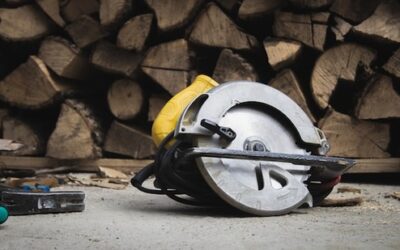






![7 Warning Signs of a Home Moisture Problem [+ Causes]](https://www.bessemeter.com/wp-content/uploads/2023/01/wood-with-water-400x250.jpg)






